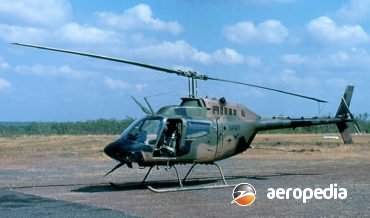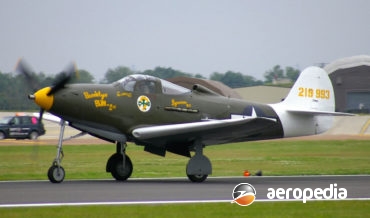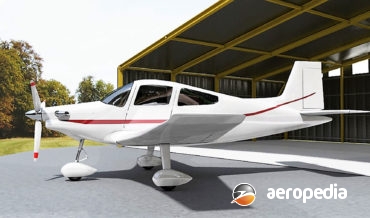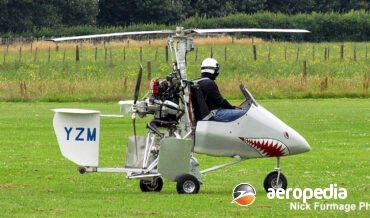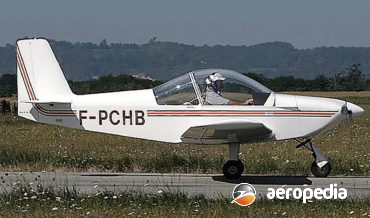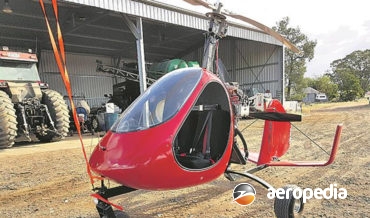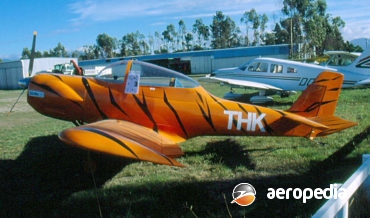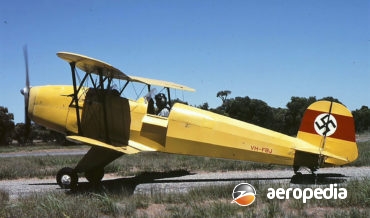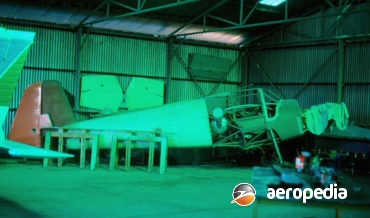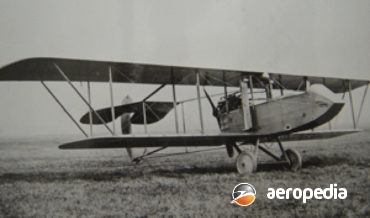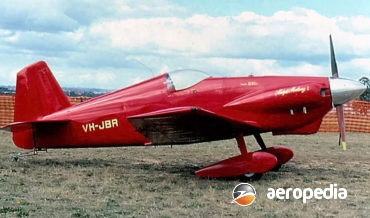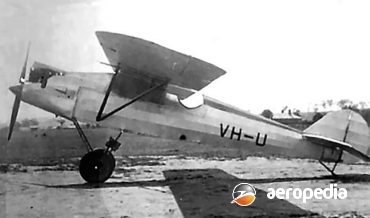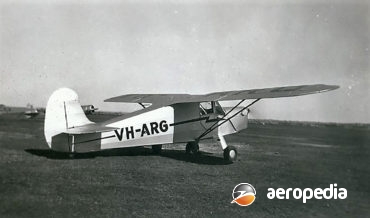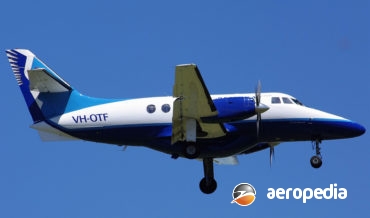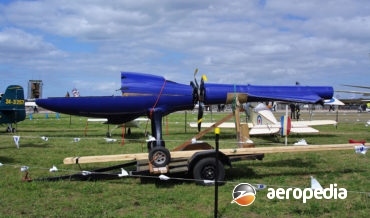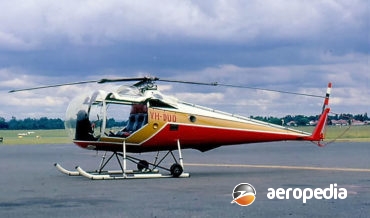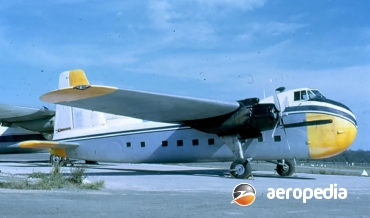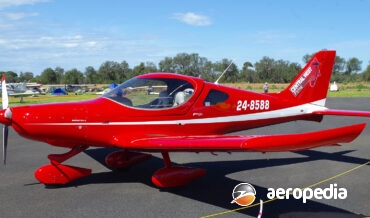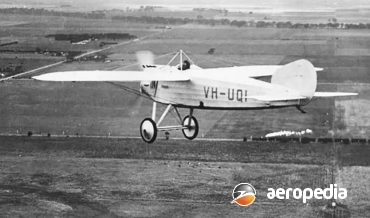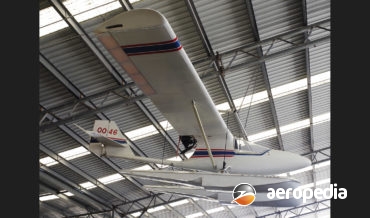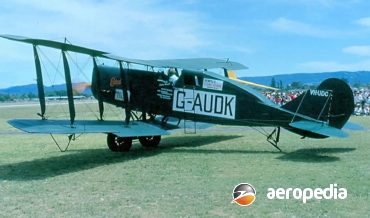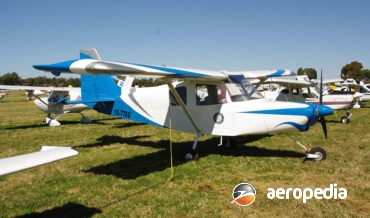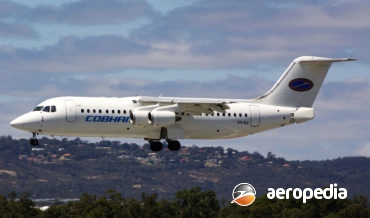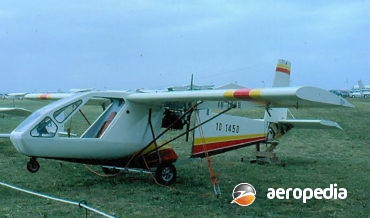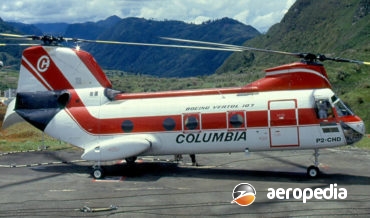All Contents
Contents
The US Army in 1960 issued a proposal for a light observation helicopter and Bell Helicopter submitted a variant of the Model 206, which became the YHO-4A.
David C. Eyre
- May 19, 2019
In 1936 Bell Aircraft Corporation designed what was to be a radical departure from the norm for fighter aircraft at that time, having the engine behind the pilot driving the propeller by means of an extension shaft.
David C. Eyre
- May 19, 2019
The Aircruiser is a low-wing, fixed-tricycle undercarriage four-seat monoplane of all-metal construction designed initially by Henry Millicer. Mr Millicer is well known for designing the Victa Airtourer and the Aircruiser.
David C. Eyre
- May 8, 2019
The Butterfly series of gyrocopters marketed in kit form in the United States in a number of models, including the Emperor Butterfly, Monarch Butterfly, Golden Butterfly, Aurora Butterfly, Turbo Golden Butterfly, Ultralight Butterfly etc.
David C. Eyre
- May 8, 2019
An aircraft known as the Brumby was designed and developed by Aero Composite of Bankstown, NSW, in conjunction with Spectrum Technology Pyt Ltd, as a high-performance sporting monoplane.
David C. Eyre
- May 8, 2019
The Cherry BX-2 is a light two-seat, side-by-side, sporting amateur-built aircraft designed by Max Brandli of BX Aviation in Switzerland.
David C. Eyre
- May 8, 2019
The Firebird is one of a series of gyrocopters designed and built by Paul Bruty at his facility at Ballarat VIC. and is the culmination of much development to produce a cross-country gyroplane for amateur builders, and to provide it in kit form.
David C. Eyre
- May 8, 2019
The Tiger Hawk is a small ultra-light homebuilt sporting aircraft designed and built by Mr Tim P D Bygate of Nelson, NZ. The first example was completed in 2002 and registered as ZK-THK (c/n 1) painted in an attractive Tiger colour scheme, making its first flight on 7 September 2001
David C. Eyre
- May 8, 2019
The Mosquito made its public debut at the Australian Bicentennial Airshow at Richmond, NSW in October 1988, being a two-seat light aircraft built by the Buchanan Aircraft Corporation Ltd.
David C. Eyre
- May 8, 2019
On 27 April 1934 the prototype of the Bu 131A Jungmann (D-1350), designed in 1933 by Anders Andersson and Carl Bucker, powered by a 60-kw (80-hp) Hirth HM60R four-cylinder engine, was flown for the first time at Johannistal near Berlin, Germany.
David C. Eyre
- May 8, 2019
The Bu 181 series was designed as a sports and touring aircraft, the prototype flying for the first time in February 1939.
David C. Eyre
- May 8, 2019
The W Starling Burgess Co of Marblehead, Massachusetts, which had been for some years manufacturing speedboats, produced a Curtiss designed seaplane with a pusher engine located at the rear of the wings.
David C. Eyre
- May 8, 2019
The Mustang I was designed by the late David Long, and was originally known as the Midget Mustang, being of all metal construction, the prototype flying for the first time in 1948.
David C. Eyre
- May 8, 2019
The Mustang I was designed by the late David Long and was originally known as the Midget Mustang, being of all-metal construction and flying for the first time in 1948.
David C. Eyre
- May 8, 2019
The ABA was designed and built by Mr Cecil Arthur Butler [1902 - 1980 - born in Sparkhill in Warwickshire in the United Kingdom] in 1930 as a shoulder-wing monoplane for the sporting aviator.
David C. Eyre
- May 8, 2019
The Bat was one of two aircraft designed and built by Mr C Arthur Butler, a well known Australian aviator who, in October 1931 flew a Comper Swift (G-ABRE) from the United Kingdom to Australia.
David C. Eyre
- May 8, 2019
The story of the Jetsteam goes back to 1965 when Handley Page designed the HP-137 Jetstream business aircraft powered by two 634-kw (850-eshp) Turbomeca Astazou XIV turboprops, the prototype of which was flown for the first time on 18 August 1967.
David C. Eyre
- May 8, 2019
The JBX-1 is a new Australian designed ultra-light single-seat high-performance sporting aircraft designed, built and manufactured by Best Brand Aussie Aero of Camberwell, VIC, a company which produces the modular design aircraft which is described as like a 35-mm camera with interchangeable lenses, “instead of changing lenses, you can change
David C. Eyre
- May 8, 2019
The development programme for a lengthened Jetstream 31 began in May 1989, a full-scale mock-up being displayed at the 1989 Paris Airshow.
David C. Eyre
- May 8, 2019
The Brantly Helicopter Corporation was formed atPhiladelphia, Pennsylvania by Mr N O Brantly during World War II to develop his design of a co-axial rotor helicopter known as the B-1.
David C. Eyre
- May 8, 2019
A development of the Britten Norman Islander, the prototype of the BN-2T was flown for the first time on 2 August 1980, and production followed slowly over the following years.
David C. Eyre
- May 8, 2019
The BA.25 was designed and developed by Societa Italiana Ernest Breda in 1931 as a basic trainer and 753 examples were produced, the majority being supplied to the Italian Air Force for training duties, but a number of early production aircraft were supplied to the Hungarian Air Force.
David C. Eyre
- May 8, 2019
Designed in 1966 by one of Britain’s smallest aircraft manufacturing companies, the Islander became the best-selling British multi-engine commercial aircraft.
David C. Eyre
- May 8, 2019
Designed initially as a military freighter capable of operating from hot, semi-prepared landing areas with a payload of between four and five tonnes, and the ability to load and unload freight quickly through clam-shell doors in the nose, the Bristol Freighter proved to be reasonably popular with some 214 examples
David C. Eyre
- May 8, 2019
The Trislander was developed from the twin-engine Islander, and had the same fuselage cross-section and mainplane.
David C. Eyre
- May 8, 2019
The first prototype of the Bristol 171 Sycamore, a Mk 1 (serial VL958), was flown on 27 July 1947, with the second, a Mk 2 (VL963) being flown in February 1948.
David C. Eyre
- May 8, 2019
This series of light aircraft was designed by BRM Aero Sro in the Czech Republic to meet world LSA regulations, and is aimed at the flight training school, glider towing and recreational flying markets. It is built in a number of models, the NG-5 series being supplied as the Bristell
David C. Eyre
- May 8, 2019
The Boxkite was designed by George Challenger and built by the British & Colonial Aeroplane Co in 1910.
David C. Eyre
- May 8, 2019
The B-4 was one of a series of aircraft designs entered in the 1924 light aircraft competition held at Richmond, NSW.
David C. Eyre
- May 8, 2019
In 1943 the Brabazon Committee convened to discuss the future development of civil aviation in the United Kingdom and out of this came the Britannia which eventually was a turboprop powered airliner.
David C. Eyre
- May 8, 2019
One of the aeroplanes designed and built for the low-powered aeroplane competition at Richmond in November/December 1924, the Broadsmith-Ross Bett I Biplane, also known as the Broadsmith B.2, was designed by well known aviation identity of the time, Mr H E Broadsmith who, for a period, had some association with
David C. Eyre
- May 8, 2019
The Bristol M-1C, designed by Captain F S Barnwell in 1916, was a breakaway from contemporary design standard because, as a wire-braced monoplane, it represented an attempt to produce an aerodynamically clean airframe.
David C. Eyre
- May 8, 2019
Raymond Broome was interested in designing his own ultralight aircraft and in the late 1980s commenced to build an aircraft, this being along the lines of the Bedson Resurgam series.
David C. Eyre
- May 8, 2019
The Bristol Tourer was originally a conversion of the Bristol F.2B Fighter built for and flown by the RAF in World War I.
David C. Eyre
- May 8, 2019
In 2009 Brumby aircraft of Cowra, NSW announced it was to build and market a high wing model of his successful Brumby low wing monoplane, the latter becoming known as the Model 600 and the new model became known as the Brumby High wing 610 LSA, the partially completed prototype
David C. Eyre
- May 8, 2019
Initially known as the Hawker Siddeley HS 746, the series was first launched in 1973 as a feeder-jet transport, the design being the subject of a lengthy gestation period in the wake of the oil crisis.
David C. Eyre
- May 8, 2019
The Boeing Model I, commonly referred to as the Boeing & Westervelt seaplane F, or B & W, is important in the annals of aviation as the first of a long-line of aircraft produced by Boeing.
David C. Eyre
- May 8, 2019
The JB-2 was designed by Melbourne designer, Rolf Brand, as a light sporting aircraft aimed at the homebuilder and sports aviation enthusiast.
David C. Eyre
- May 8, 2019
In 1934 the Stearman Aircraft Company became a subsidiary of Boeing, and in that year placed in production its Model 73, a derivative of the Stearman Model C series of biplanes.
David C. Eyre
- May 8, 2019
Vertol Aircraft Corporation was formed in March 1956 and immediately commenced the design of a twin-turbine tandem-rotor transport helicopter for civil and military use.
David C. Eyre
- May 8, 2019
Recent Comments
Archives
Categories
- No categories
Categories
- No categories
Latest Posts
Newsletter

